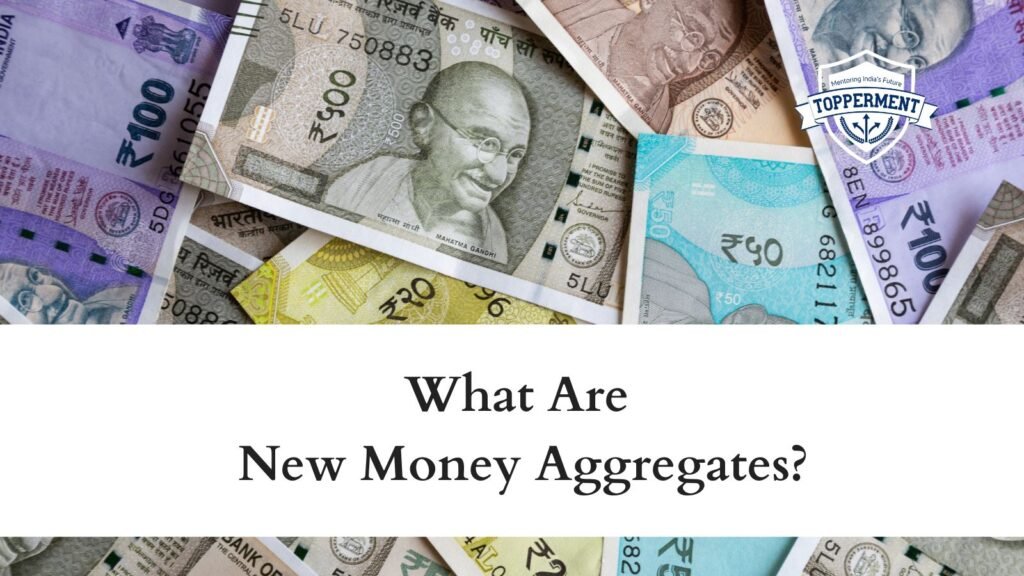The money supply in a country is measured by the money aggregates. It is the total supply of money in circulation in a given economy at any given time. The Reserve Bank Of India measures the money supply on a weekly basis in India.
Earlier, the Money Aggregates are termed M0, M1, M2, and M3. Right now, RBI sometimes refers to new aggregates like NM0, NM1, NM2, and NM3.
Importance Of Money Aggregates
· Money Aggregates are used to estimate the economy’s total money supply and by central banks to drive monetary policy in order to regulate inflation, consumption growth, and liquidity over medium and long periods.
· It is monitored as a measure of money supply and anticipates Inflation.
· It is critical for managing liquidity and price levels.
NM0(Monetary Base Or Reserve Money): It is the sum of currency in Circulation, Banker’s Deposits with RBI, and ‘ Other’ Deposits.
NM1(Narrow Money) is the sum of currency with the Public, Demand deposits with the Banking system, and other important deposits with RBI.
NM2 is the sum of currency with the Public, and currency deposits with the banking systems. It includes certificates, deposits, and other deposits with RBI.
NM3 is the Broad Money and it is the sum of currency with the Public, Current Deposits, Savings Deposits, Banking System, Certificates, and other deposits with RBI.
The new money aggregates are introduced by RBI but the terminology used for them is quite the same as the earlier money aggregates.
Also Read
- Plant Biotechnology: Revolutionizing Agriculture for a Sustainable Future | UPSC Science And Technology
- Plateau Formation Process And Its Significance | UPSC Geography
Follow Us For More Content On:
https://www.instagram.com/topperment/
Tag:Banking System, Banking Systems, Deposits, Economics, IAS, IFS, India, IPS, IRS, Monetary Base, Money, narrow money, New Money Aggregates, RBI, Reserve Money, UPSC


